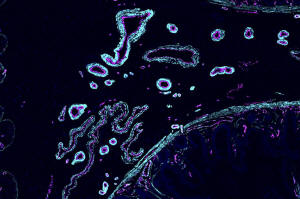Scientists map out the human body one cell at a time
 Send a link to a friend
Send a link to a friend
 [November 21, 2024]
By ADITHI RAMAKRISHNAN and LAURA UNGAR [November 21, 2024]
By ADITHI RAMAKRISHNAN and LAURA UNGAR
Researchers have created an early map of some of the human body's
estimated 37.2 trillion cells.
Each type of cell has a unique role, and knowing what all the cells do
can help scientists better understand health and diseases such as
cancer.
Scientists focused on certain organs — plotting the jobs of cells in the
mouth, stomach and intestines, as well as cells that guide how bones and
joints develop. They also explored which cells group into tissues, where
they're located in the body and how they change over time.
They hope the high-resolution, open-access atlas — considered a first
draft — will help researchers fight diseases that damage or corrupt
human cells.
“When things go wrong, they go wrong with our cells first and foremost,"
said Aviv Regev, co-chair of the Human Cell Atlas consortium who was
involved with the research.
The findings were published Wednesday in Nature and related journals.
The group plans to release a more complete atlas in 2026, profiling
cells across 18 organs and body systems. That includes the skin, heart,
breasts and more.
The current cell map not only charts the many types of human cells, but
it also shows the relationships of cells to each other, said Dr. Timothy
Chan, a cancer expert at the Cleveland Clinic.
[to top of second column]
|

This image provided by Ana-Maria Cujba shows blood vessels in a
portion of the human small intestine, March 21, 2024. (Ana-Maria
Cujba/Wellcome Sanger Institute via AP)
 Chan said it's a deep dive into
human biology that's sure to have practical impact such as
identifying and treating cancer cells.
“Different types of cells have different Achilles’ heels,” said
Chan, who was not involved in the studies. “This is going to be a
boon" for cancer research.
Scientists are also creating other atlases that could help them
learn more about the underpinnings of health and disease in specific
parts of the body.
With brain atlases, they’re seeking to understand the structure,
location and function of the many types of brain cells. A new gut
microbiome atlas looks at the collection of microorganisms in the
intestines, which plays a key role in digestion and immune system
health.
All contents © copyright 2024 Associated Press. All rights reserved |